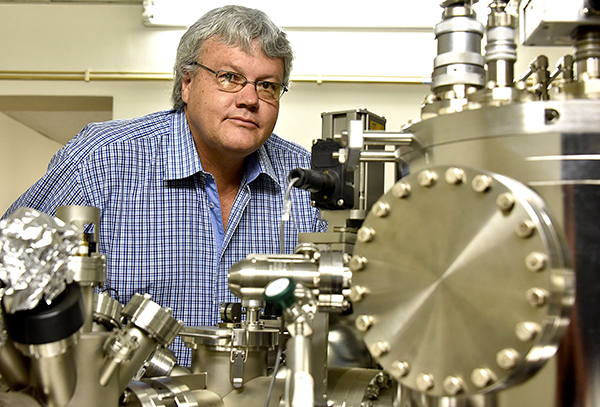Latest News Archive
Please select Category, Year, and then Month to display items
12 May 2023
|
Story Mbali Moiketsi
|
Photo iStock

Visiting universities and learning more about them is an essential part of prospective students’ journey into higher education. The University of the Free State (UFS) has launched the Kovsie-Connect Virtual Experience.
This is an initiative of the Student Recruitment Services in partnership with the Office for International Affairs to give the modern-day prospective student an experience of what the University of the Free State can offer. The Kovsie-Connect Virtual Experience is an interactive online platform that allows prospective students to engage and learn more about the UFS from the comfort of their own homes.
The Virtual Experience is tailor-made for local and international prospective students with the aim of providing an overview of academic offerings, facilities, and student life through a series of online documents, pre-recorded videos, and virtual tours.
The virtual format allows for easy accessibility and convenience, as potential students can attend the event from anywhere in the world without the need for travel. This experience aims to provide students with the information they need to make an informed decision and Choose the UFS!
 Click here to access the tour
Click here to access the tour.
UFS Physics Research Chair receives more funding
2017-11-20

Prof Hendrik Swart, Senior Researcher Professor in the
Department of Physics at UFS.
Photo: Charl Devenish
A research project into low-energy lighting using phosphor materials for light emitting diodes (LEDs) at the Department of Physics at the University of the Free State (UFS) has received further recognition.
The South African Research Chairs Initiative (SARChi) has awarded further funding for the Research Chair in Solid State Luminescent and Advanced Materials situated in the department. Prof Hendrik Swart, a Senior Research Professor in the Department of Physics, says this means that the Chair will carry on receiving funds from SARChi for another five years. The Initiative also awarded Prof Swart in 2012 for the research, which resulted in funding for equipment and among others, bursaries.
Better light emission in LED’s
The research focuses on better light emission of phosphor powers in LEDs. It is also looking into improving LED displays in flat screens. The research into solar cells has shown that phosphors can also increase their efficiency by increasing the range of light frequencies, which convert into electricity. It also entails that glow-in-the-dark coatings absorb light during the day and emit it at night.
Prof Swart says over the next five years the research will focus on developing and producing devices that emit better light using the substances already developed. “We need to make small devices to see if they are better than those we already have.” In practical terms, it means they want a farmer’s water pump that works with solar energy to work better with less energy input.”
Device that simulates sunlight
Prof Swart says the renewal of the Chair’s funding means the department can now get equipment to enhance its research such as a solar simulator. The solar simulator uses white LEDs whose intensity output and wavelengths can be tuned. The output is measured in number of suns. It enables researchers to work in a laboratory with a device that simulates sunlight.
According to Prof Swart the long-term benefit of the research will result in more environmentally friendly devices which use less energy, are brighter and give a wider viewing field.
About 10 postdoctoral researchers are working on the studies done by the Chair in collaboration with the Council for Scientific and Industrial Research.
The Research Chair Initiative aims to improve the research capacity at public universities to produce high-quality postgraduate students, research and innovative outputs. The criterion for evaluating the department’s Chair includes aspects such as how much development has occurred over the past five years. The assessors look at features such as the number of students the research entity has trained and how many publications the research team has produced.